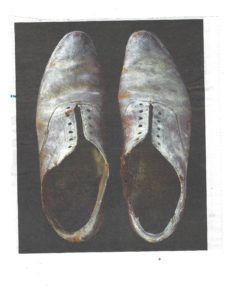Our poetry workshop at LLI (LLIChesterfield.org) focused on the literary term, Synesthesia, which may also be a technique that combines images from each of the human senses, i.e. sight, sound, taste, touch, and smell to powerfully convey what a poet intends for the reader to experience. We noted that the speaker of the poem is not always the same as its writer, however, we can sometimes assume that it is. We discussed some words that might illustrate different senses. For example, Sight may be illustrated by the adjectives shimmering, hulking, spindly, or mauve; Sound by blotchy, screeching, or rumbling; Taste by tart, sugary, peppery, or bitter; Touch by rough, sticky, slick, gritty, or plump; and Smell by reeks, aromatic, odorous, stinky, or stench. Synesthesia works most powerfully in a poem by combining images from different modalities together in unexpected ways. This concept was, perhaps, first made most famous by the Symbolist artists and writers of the late nineteenth and early twentieth century, such as Baudelaire and Oscar Wilde in literature and Edvard Monck in painting.
In my recent Blog called “My Baby Thinks he’s a Train,” Rosanne Cash sings about her baby who, she thinks, is insane. He “drags her around like an old caboose.” He makes a short “whistle stop” and then he’s gone. We hear the train rhythm building in the poem—even more so in the song. “Locomotion’s the way he moves” gives us a double meaning of the word “loco,” and “motion” blending a psychological state with an apt description of her baby’s movement. When she says, “He eats money like a train eats coal,” we get a powerful synesthesia of the tactile and visual images. As a prompt for next week’s class, I asked the workshop participants to write a poem illustrating motion that combines senses in different ways.
Almost in anticipation of my lesson, some wrote poems that contained elements of Synesthesia. Bob Ferguson wrote “Mountain Walk,” where he invited readers to “Feel the earth, ferns, plants, and rock,” and to “touch the streams sparkling waters so cold.” He suggested that we also learn to “Know the warmth of a sunny boulder so old,” and to feel sharp thorn, and the rough bark. As a contrast to these rough tactile images, he also invited us to touch “the soft smooth feathers of a lark.”
Tim Pace narrates an Ode contrasting the old and the new prairie that he grew up on. He visualizes “long blue skies, buffalo herds, and zephyr winds, thus combining visual images and our imagined sounds of the buffaloes stampeding. We are left to imagine what a zephyr wind might sound and feel like.
Nancy Kunnmann wrote a poem called, “Beginning.” She uses an excellent sudden poem starter (see my Blog on Poem Starters) when she drops the term white as milk out of nowhere. The milk suggests a metaphor for the snow and its fresh start that the speaker saw outside after a recent overnight snowstorm. The storm suggested some new possibilities that were outside of the straight two-dimensional lines that she usually walks, and into some endless possibilities of a new circular reality. The poem also that ends wit the same milky white image as it begins. Both the poet and the poetry workshop participants were left wondering what those new possibilities might be. No one was sure, but everyone was engaged in the poem.

Here is Nancy’s Kunnmann’s poem, “Beginnings:”
White as milk.
This storm has brought a clean slate for me
To begin a new journey
A new day for all those waking up to greet.
I can be safe and draw straight lines to
Meet other straight lines or twist and
Turn my direction
Do I add color or stay with black and white?
Do I stay within the lines, or venture out to
See where this circle brings me?
The possibilities are endless, and it all started
One snowy morning, on a path as
“White as milk.”



